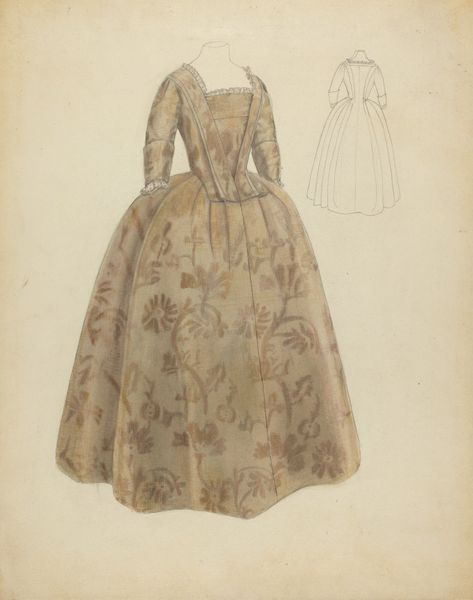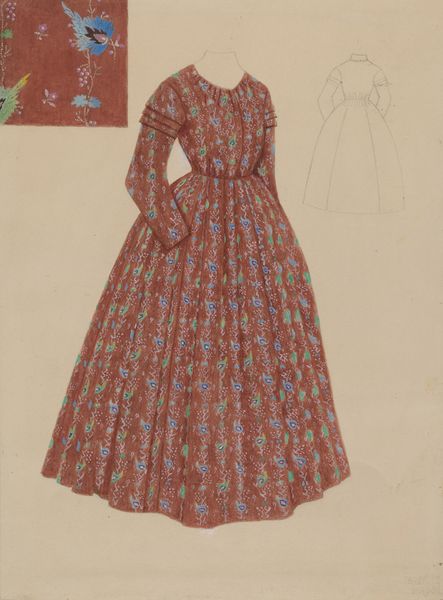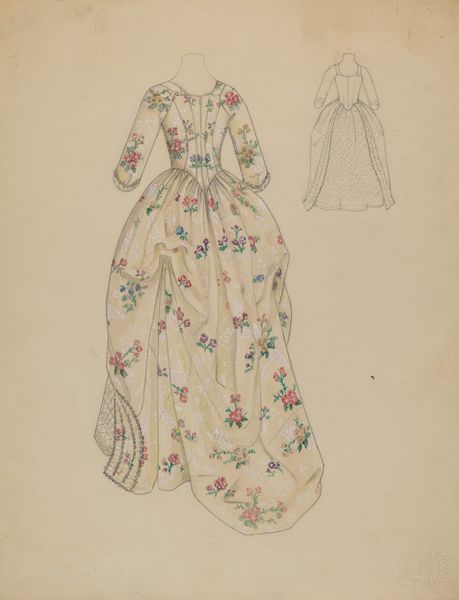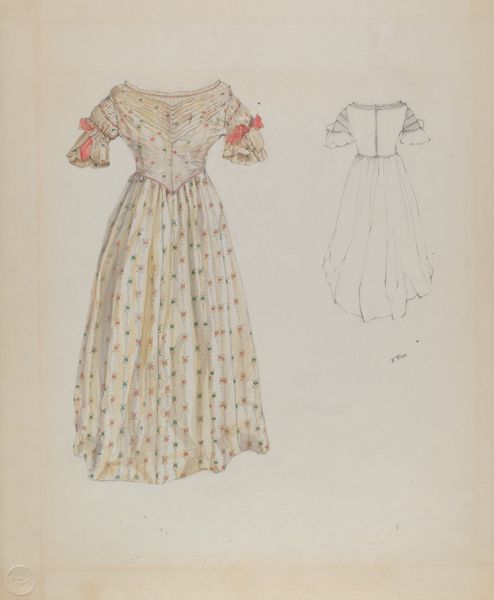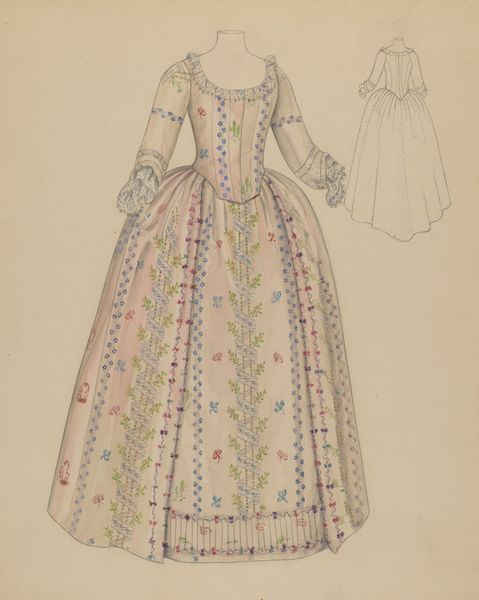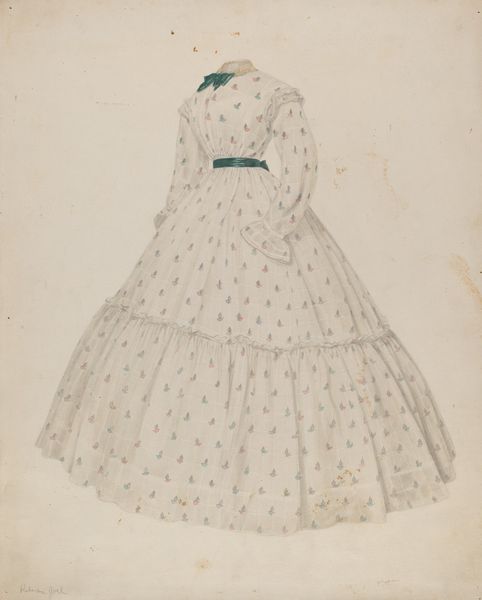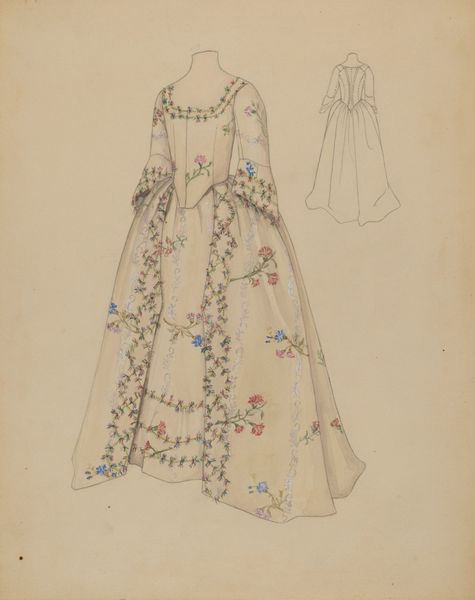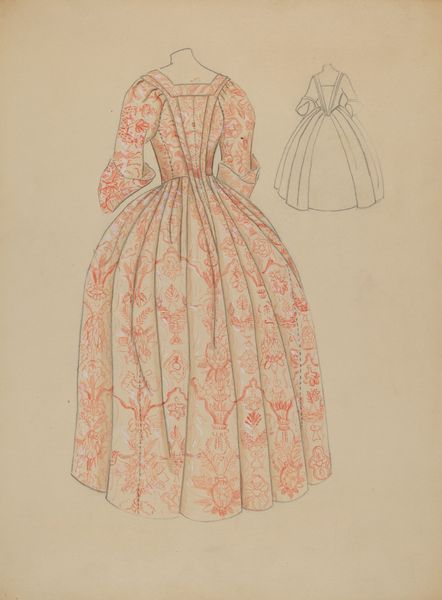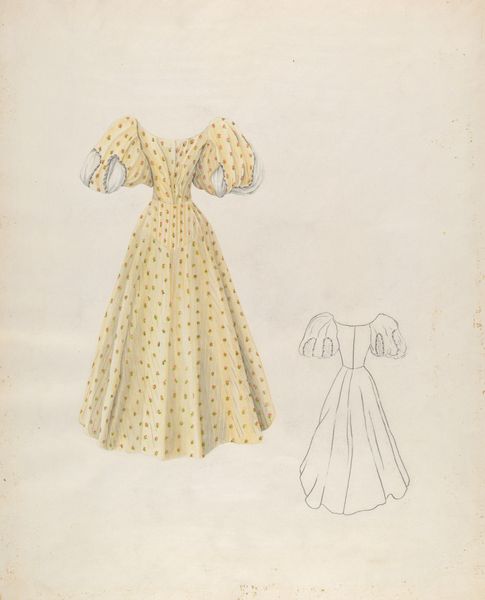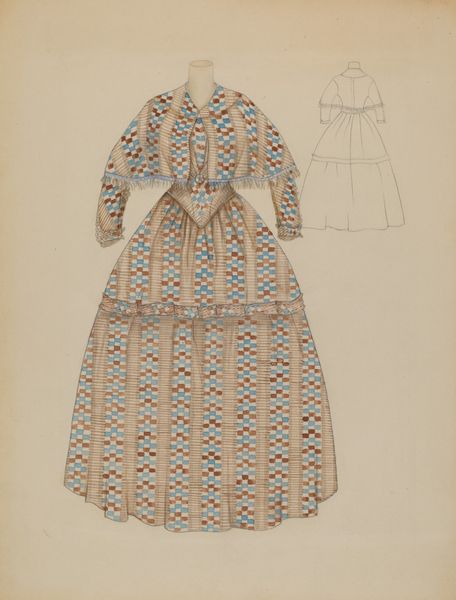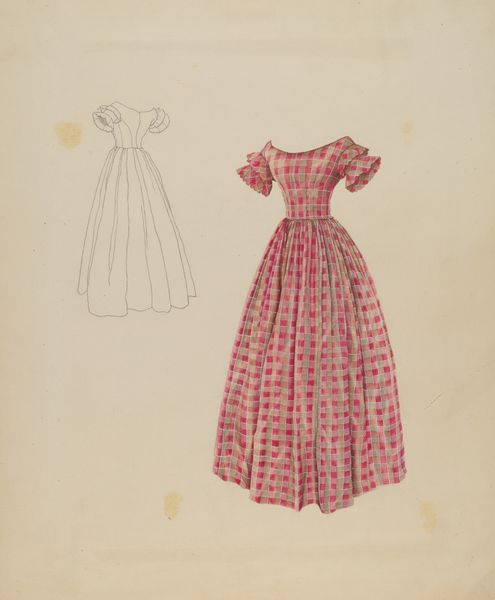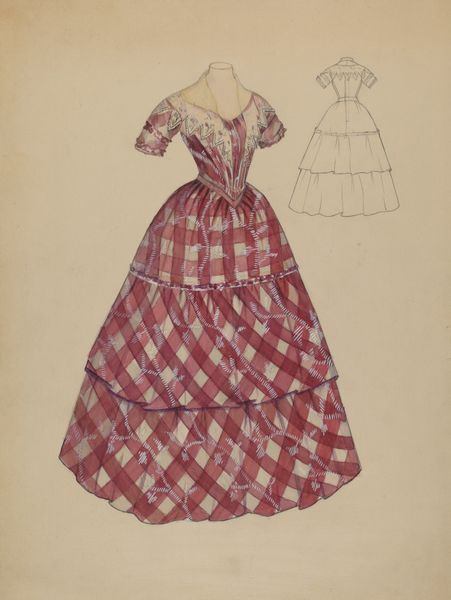
Dimensions: overall: 30.7 x 23.2 cm (12 1/16 x 9 1/8 in.)
Copyright: National Gallery of Art: CC0 1.0
Curator: This is Julie C. Brush's "Dress," a drawing from around 1937. It seems to be rendered in pencil and possibly watercolor on paper. What strikes you most about it? Editor: Well, right away, the color palette feels muted, almost sepia-toned. It gives it this dreamy, romantic quality. I wonder what the social context was for fashion design at that time, especially considering the economic hardships of the late 1930s. Curator: The Romantic sensibility is a good starting point. Consider the puffed sleeves and overall silhouette—it definitely harkens back to earlier eras. Perhaps that yearning for an imagined, more graceful past offered some solace. Editor: I can see that. The floral patterns also speak to romanticism and escapism, right? It feels almost defiant amidst widespread poverty, a silent resistance through beauty. Curator: Indeed. And flowers are universally resonant; they embody themes of beauty, transience, and rebirth. The carefully detailed pattern could represent not just adornment, but an intricate order and cyclical continuity that runs counter to immediate chaos. Editor: I’m drawn to the ways the fashion design emphasizes the shoulders and waist. What I see here is not necessarily a preservation of demure femininity, but instead the amplification of this hyper-femininity as a performance and potentially subversion. The dress becomes almost like armour, right? Curator: That's an insightful perspective. Perhaps the artist meant to capture something more complex than simple nostalgia, using clothing as both a visual symbol and a performative statement about female identity within society at the time. Editor: Thinking about this drawing from a fashion studies perspective helps decode what the work can tell us about gender, class, and other types of social roles, and their place in the history. We might then decode fashion as symbolic language for the wearer. Curator: Ultimately, these sketches allow us access not just into one era's style, but deeper into enduring aesthetic symbols connected to cultural values surrounding aspiration and hope. Editor: Exactly. Examining fashion gives us an intimate lens to scrutinize broader social narratives.
Comments
No comments
Be the first to comment and join the conversation on the ultimate creative platform.
